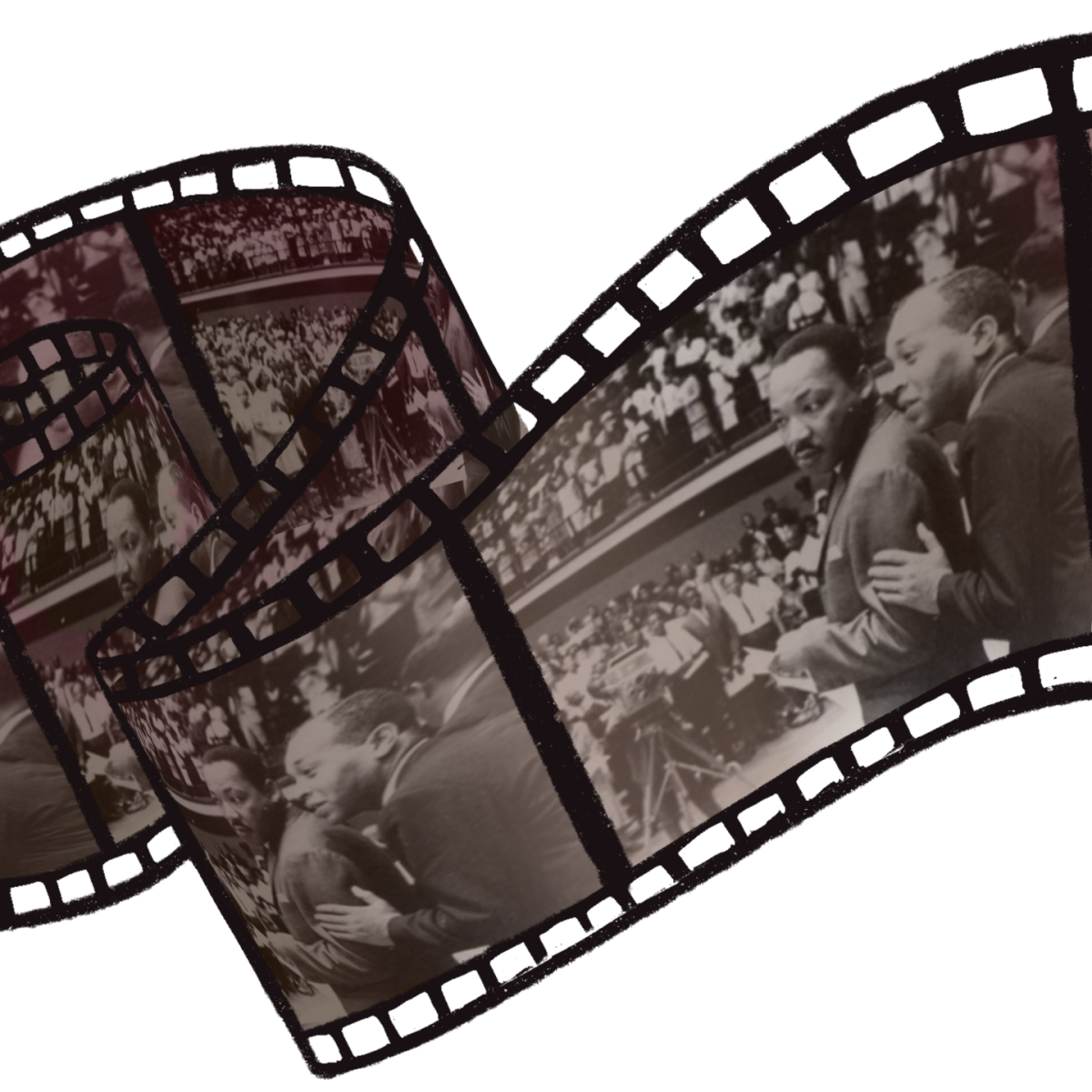Newly found footage captures Martin Luther King Jr.’s speech at Reynolds Coliseum in 1966, during the height of the civil rights movement. This footage shines a light on the monumental event and raises questions surrounding the fact that it was almost entirely erased from history.
Jason Miller, alumni and professor of English, said he became aware of King’s visit to Reynolds Coliseum during an eight-year project centered around King’s use of Langston Hughes’s work in his speeches. As Miller did talks around the Raleigh community, he said multiple people would ask if he was aware of King’s July 31, 1966 visit.
After setting up an exhibit surrounding what was known about King’s visit with the African American Cultural Center, Miller said Marshall Wyatt, the son of a videographer who was present at the speech, reached out to Miller with the physical videotape he found in his basement. Previous to the video, only a single photo from the speech was known to exist.
Miller said King’s visit had no documentation other than on his FBI file, and it had been erased from history both intentionally and unintentionally. He said many intentionally sought to forget the visit because of the massive Ku Klux Klan protest that was formed in response to the event, and NC State student media never had the chance to cover the event since it occurred over the summer.
“On the same exact day, an 1800-person march of the KKK took place right down Fayetteville Street,” Miller said. “They went down Fayetteville Street in full regalia, but also with the audacity to have their faces showing — it was a really odd era. They look like Klansmen, but they’re not scared to tell you who they are.”
Miller said King’s visit to North Carolina was treacherous, as North Carolina housed the highest population of Klan members for any state at the time.
“North Carolina at the time was known as Klansville, USA, and over 50% of the entire national population of Klansmen were in the state of North Carolina,” Miller said. “That event had really shaped the way the community had tried to forget this horrific show of white supremacy, and [white supremacy] was a term they used at the time. Not one we superimposed from today – they were called white supremacists in 1966, and that legacy still is unfortunately with us.”
Miller said King came to Raleigh to address North Carolina’s forgotten Black population and set the narrative for civil rights straight after organizer Stokely Carmichael called for militant action to be taken in Raleigh, six weeks before King’s visit.
“Not only were the Klansmen against him, but the mayor snubbed Dr. King when he came to town,” Miller said. “We know that four different churches in the area actually preached that Sunday morning against Dr. King and his organization, calling them antichrist. We know that there were a lot of white moderates that just kind of turned their head away, so seeing this film footage, I think is really startling for your generation.”
Ira Harris, who was present at the speech at the age of 13 years old, said the State Highway Patrol blocked off US-1, which was common along with traffic stops on routes leading toward civil rights gatherings.
On top of the road closure, Harris said he and his grandfather had to walk by the Ku Klux Klan march in order to get to Reynolds.
“Even some had their little kids dressed up as mini klansmen — outrageous considering what it was all about,” Harris said. “It was scary because we had encountered them before, but most times they would do the stuff undercover.”
Harris said King’s speech put him at ease and made him hopeful for the future, despite the dire issues the Black community was facing.
“His voice is a moving-type voice,” Harris said. “Just stir your soul up about what’s going on, but it makes you feel better to hear and speak … He gave the negro people hope there was a brighter future coming, even though at the time, we couldn’t see it.”
While the video has no audio, Miller said the existence of the video itself is invaluable to remembering King’s presence on campus and putting this history into perspective.
“This video has a really critical role to play in making sure that we institutionalize the memory of Dr. King’s visit at NC State University,” Miller said. “We have this incredible film footage, and nothing speaks to our era like audio and visual elements. It’s one thing to read a written text like ‘Letter from Birmingham Jail’ … but there’s nothing quite like hearing Dr. King say ‘I have a dream,’ and there’s nothing quite like seeing him and realizing, ‘Wait, that’s Reynolds Coliseum. That’s where I study and go to school to get my degree.’ That brings history right up front to us.”
The full video will soon be available to the public as a part of the “When MLK and the KKK met in Raleigh” digital project in Hunt Library.













